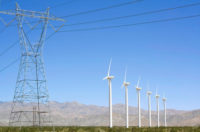Related Article:
Novel $750M Gas Power Plant With No Air Emissions Set in Texas
Back to:
25 Top Newsmakers
When development hit a snag in 2021 on NET Power LLC’s still unproven technology to allow power plants to burn natural gas with near-zero emissions while producing dispatchable energy, Ron DeGregorio stepped up to lead the effort as CEO.
Just retired as Exelon Corp. power group president and a 40-year sector veteran, since 2014 he had been a board member of NET Power—a firm formed by Exelon unit Constellation Energy, The Shaw Group and low-carbon energy developer 8 Rivers Capital— which was building a 50-MW demonstration plant in La Porte, Texas.
DeGregorio says NET Power had been quietly developing the closed-loop supercritical technology for years but its forward trajectory began to falter.
“The company providing turbine machinery had challenges,” he says. NET Power’s board asked him to boost pilot project work and seek more company investment. Occidental Petroleum Corp. became an owner with a $100-million investment in 2016. DeGregorio asked Baker Hughes, also now an owner, to develop supercritical carbon dioxide turboexpanders and other processes.
NET Power uses Allam cycle technology, named for an inventor with its patent, which burns natural gas with oxygen instead of air and uses supercritical CO2 instead of steam to drive the turbine. The pilot, built by contractor McDermott, successfully synchronized with the Texas grid in 2021 after operating for 1,500 hours.

CEO Ron DeGregorio Photo: New Power LLC
NET Power’s process is ranked by the Massachusetts Institute of Technology as one of its 10 breakthrough technologies and one of the most developed with more than a marginal advance in cutting carbon emissions.
Occidental unit President Richard Jackson told ENR that NET Power has the potential to transform the power industry. “It can accelerate efforts to reduce carbon emissions in our existing operations and ultimately supply emissions-free power to future direct air capture sites and sequestration hubs,” he says.
Occidental will host a 370-MW commercial scale NET Power plant in the Texas Permian Basin set to remove 860,000 tons of CO2 a year to be stored underground. The project is set to be built to generate 370 MW of power, with 300 MW going to the grid and 70 MW used to run the plant’s air separator unit.
NET Power is releasing few details on the estimated $750-million to $950-milloin plant set to start construction in 2024 and be on line in 2026, but DeGregorio says it will select an EPC contractor before March. NET Power said it intends to pursue government loans and incentives under new federal laws. Credits could provide $85 per ton of CO2 sequestered for the first 12 years of operation, $70 million per year, it told Forbes.
The potential has attracted deeper-pocket interest. Rice Acquisition Corp. II, a special purpose acquisition firm, said in December it would take NET Power public to create a $1.46-billion firm. “Ron did an extraordinary job to coordinate and run LaPorte for technology validation,” says Kyle Derham, Rice Acquisition CEO. “We are big believers and have been following NET Power for several years.”
Daniel Rice, a firm director who had run a family-owned natural gas firm that sold for $6.7 billion in 2017, will be NET Power CEO after the deal closes, set for second quarter. Rice also looked at hydrogen, geothermal and small nuclear reactor technology for investment, but only NET Power gets close to zero carbon emissions while producing dispatchable power that is scalable, says Derham.
While retirement looms, DeGregorio remains enthusiastic. “We have long believed that if you can use natural gas, generate reliable electricity and capture the resulting emissions, you would change the world,” he says. “We will show the technology’s great value.”






Post a comment to this article
Report Abusive Comment